1st Alice

Beez Neez now Chy Whella
Big Bear and Pepe Millard
Mon 28 Mar 2016 22:57
|
First Bimble in Alice
Springs
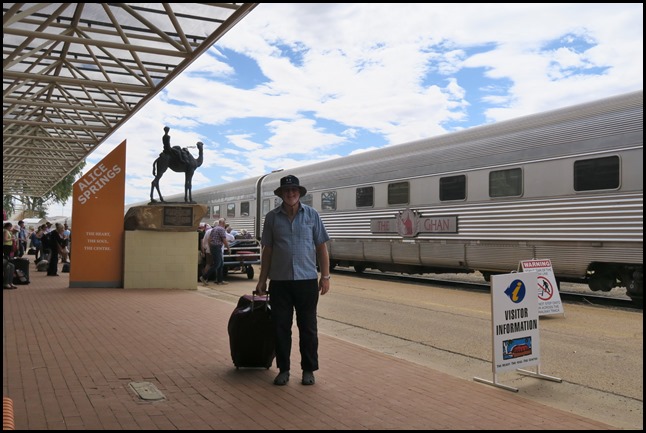 We pulled into Alice Springs at
twenty past one, the doors opened and the heat snuck in. Air-conditioning gave
way to thirty eight degrees Centigrade, with only fifteen per cent humidity. We
left the Ghan, thanking the lovely team who had taken
care of us, bade our farewells to our fellow passengers and off we went with
Sarah, who was heading the same way as us. Bear reassured me our motel was not
too far..... Mmm, heard that before but as he was pulling our case, off we went
at a gentle bimble.
 Three
camels graced the end of the station.
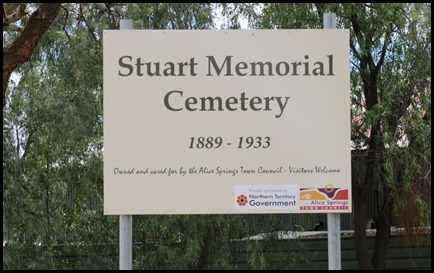  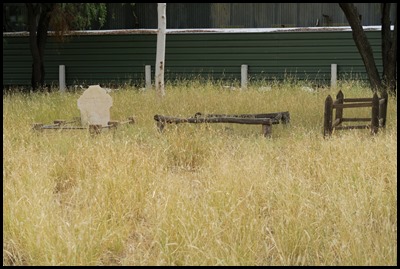 I couldn’t get Bear and Sarah to pose
with the camels, so as they chatted, bimbled and got a little ahead of me, I
crept across the road for a quick look at Stuart Memorial
Cemetery. Sadly, the Owned and cared for by the local Council
has been poor to say the very least, but in I went.
“The burial place lay half a mile to
the west of the settlement, and is marked by two old iron-bark trees, through
the leaves of which the wind utters a mournful sighing”. Sister Jean Finlayson,
Life and Journeyings in Central Australia, 1925.
Sister Jean Finlayson arrived in
1915, and as the town’s first official Nursing Sister, she saw for herself the
pain and suffering of those who became ill or injured. Accidents and illnesses were often life-threatening and fatal. The
nearest medical facilities were in Oodnadatta or Marree, ten days journey
by horse and buggy. The tasks and demands on her must have been overwhelming at
times.
Services did not exist until the
opening of Adelaide House in 1926. The town’s first Resident Medical Officer was
not appointed until 1934. Commercial flights began in the late 1930’s, the train
pulled in in 1939. The hospital also opened in 1939 and in the same year the
Royal Flying Doctor Base was established in the town.
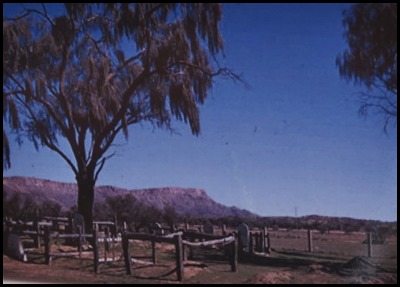 The cemetery as it
was in 1960 prior to the establishment of the Industrial
Area.
Alice
Springs was initially known as ‘Stuart’, in honour of the explorer John McDouall
Stuart, to distinguish it from the Alice Springs Telegraph Station. (The Alice Springs Telegraph
Station Historical Reserve marks the original site of the first European
settlement in Alice Springs. Established in 1872 to relay messages between Darwin and
Adelaide, it is the best preserved of the 12 stations along the Overland
Telegraph Line. Construction of this Telegraph
Station began in 1871. The township of Alice Springs takes its name from the
waterhole a short distance to the east of the Station buildings.
The Telegraph Station operated
for sixty years, and then served as a school for Aboriginal children, known as
The Bungalow). However, the town was widely referred to as ‘Alice Springs’ which
resulted in much confusion for many years, Eventually, the town’s name was
changed to Alice Springs in 1933.
 When the Town of Stuart was first surveyed in
1888, no provision was made for a cemetery. The death of Fred Spicer in a riding accident in November 1889, (whilst
he was inspecting cattle for Elders on Undoolya Station), prompted authorities
in Adelaide to act and the Cemetery Reserve was formally proclaimed in August
1890. Burials continued in the cemetery until the
opening of the Alice Springs General Cemetery in
1933.
George Henry Medworth, (behind Fred – centre of
the picture) was a cook in Alice Springs. To his right is Anne Beatrice Raggatt,
she was the wife of storekeeper, teamster and pastoralist Fred Raggatt. She died
of typhoid which broke out in Stuart, and on the Artlunga and Winnecke
Goldfields in 1903.
Tribute to Frank: “The men who move away from
the beaten tracks of civilisation in Australia to look for gold carry their
lives insecurely in their hands. Like sailors, they never know when they’ll
return. The hideous, inhospitable desert stretches for hundreds of arid miles,
the sun glares pitilessly through the long day, sucking up the scanty, precious
water, upon which so much depends......
After piloting his little band through
vicissitudes and dangers, and weakened by anxiety and hardship, he died almost
at the time his friends and relatives were rejoicing in his
safety”.
The dangers of early life in remote Australia was
eloquently captured by this tribute to Frank Rees George, which appeared in the
August 1906 edition of the Public Service Review.
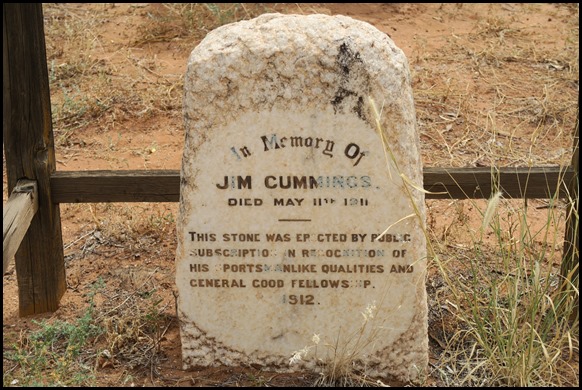 James (Jim) Cummings –
pastoralist and horse racing enthusiast. He is actually buried along Ellery
Creek west of Alice Springs. He is the great uncle of legendary horse trainer
Bart Cummings.
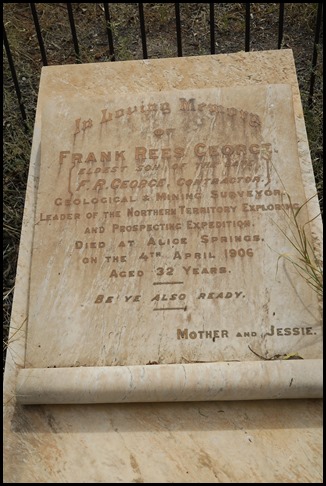 Frank Rees George –
geologist, explorer and mining engineer. George Crescent was named in his
honour.
The Stuart Town Cemetery is a
declared heritage place, on the NT Heritage Register.......... It is important
as the last resting place for many of the town’s early settlers. The ages and
causes of death highlight the unforgiving nature of the Central Australian
environment. Although there are only thirteen graves here, it is thought that
there may be up to seventy one people buried in the cemetery.
 Around the corner the information boards were in a poorly condition.
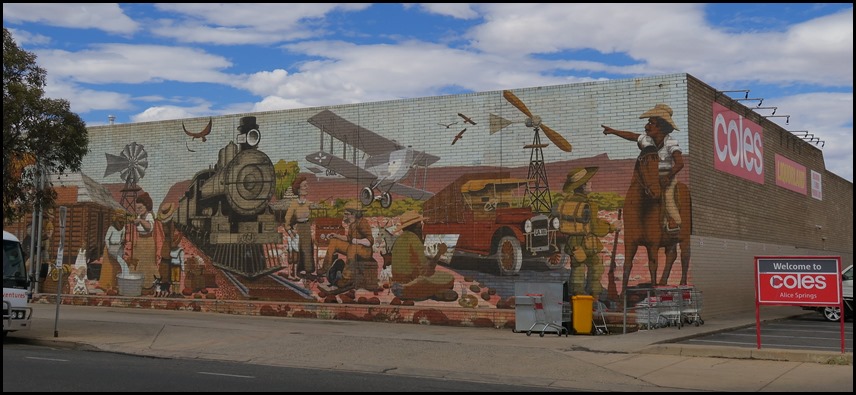 We bade farewell to Sarah at the next
corner and walked past Coles – what a great wall
mural.
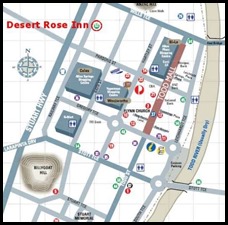  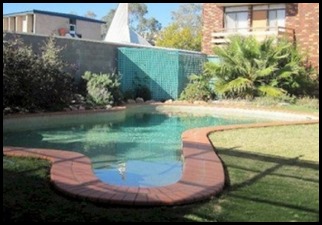 We walked along Railway Terrace to
the Desert Rose Inn, Beds was
soon settled in and we took a cool drink to the little pool. An early night after showers, as our pick-up
on the morrow is 05:41.
ALL IN ALL WONDERFUL TO BE
HERE
A WARM AND DRY
TOWN |